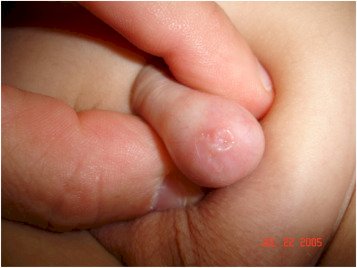Phimosis: Debunking Overdiagnosis and Overtreatment
Learn about phimosis overdiagnosis & overtreatment. Understand its natural course & avoid unnecessary interventions. Educate & dispel myths.

Introduction
Phimosis is a medical condition that has gained significant attention in recent years. It refers to the inability to retract the foreskin over the head of the penis. While phimosis can be a genuine medical concern, there is growing evidence suggesting that it is often overdiagnosed and overtreated. This article aims to explore the complexities of phimosis, shed light on the misdiagnosis issue, and highlight the importance of understanding its natural course. Before diving into the details, it is essential to comprehend the fundamental aspects of phimosis.
Understanding Phimosis
Phimosis is a condition characterized by a tight foreskin that cannot be easily retracted. It is a common occurrence in infants and young children, where it is considered a normal physiological state. As boys grow older, the foreskin gradually separates from the glans, allowing for proper retraction. However, in some cases, this natural process is delayed or impeded, leading to persistent tightness.
The Overdiagnosis Issue
-
Misinterpreting Normal Development: One of the primary reasons for the overdiagnosis of phimosis is the misinterpretation of normal developmental stages. Many parents and even healthcare professionals may mistake the natural tightness of the foreskin in young boys as pathological phimosis, leading to unnecessary concern and intervention.
-
Cultural and Social Factors: Societal norms and cultural beliefs regarding hygiene and circumcision have contributed to the overdiagnosis of phimosis. In some cultures, routine circumcision is practiced, and any tight foreskin is deemed abnormal. This cultural bias can lead to unnecessary medical interventions.
-
Lack of Awareness: Limited knowledge about the normal progression of phimosis among both parents and healthcare professionals can result in misdiagnosis. Without proper understanding, even physiological phimosis may be mistakenly classified as pathological and subsequently overtreated.
Read more: Azoospermia: Frequently asked questions
The Natural Course of Phimosis
-
Resolution with Age: In many cases, physiological phimosis resolves naturally with age. As children grow older, the foreskin gradually becomes more retractable. A study published in the Journal of Urology demonstrated that 90% of boys with physiological phimosis experienced spontaneous resolution by the age of 3 years.
-
Proper Hygiene and Education: Adequate hygiene practices, including regular cleaning of the genital area, can help maintain penile health and prevent complications associated with phimosis. Educating parents and caregivers about the natural course of phimosis and the importance of patient observation can minimize unnecessary medical interventions.
-
Non-surgical Treatment Options: In cases where phimosis causes discomfort or other complications, non-surgical treatment options such as topical steroid creams or gentle stretching exercises may be employed. These methods have shown promising results in promoting foreskin elasticity and avoiding the need for surgical intervention.
Conclusion:
Phimosis is a condition that has been overdiagnosed and overtreated due to various factors, including misinterpretation of normal development, cultural influences, and a lack of awareness about the natural course of the condition. Understanding the physiological nature of phimosis and its tendency to resolve with age is crucial in avoiding unnecessary medical interventions. By promoting education, dispelling myths, and encouraging patient observation, we can ensure that the appropriate treatment approach is taken for individuals with phimosis.
References:
-
Kikiros CS, Beasley SW, Woodward AA. The natural history of phimosis: a retrospective analysis. J Pediatr Surg. 1993;28(2):271-273. doi:10.1016/0022-3468(93)90076-6
-
Øster J. Further fate of the foreskin. Incidence of preputial adhesions, phimosis, and smegma among Danish schoolboys. Arch Dis Child. 1968;43(228):200-203. doi:10.1136/adc.43.228.200
-
Cold CJ, Taylor JR. The prepuce. BJU Int. 1999;83 Suppl 1:34-44. doi:10.1046/j.1464-410x.1999.0830s1034.x
-
Griffiths DM, Atwell JD, Freeman NV. A prospective survey of the indications and morbidity of circumcision in children. Eur Urol. 1985;11(3):184-187. doi:10.1159/000475592
-
Gairdner D. The fate of the foreskin. Br Med J. 1949;2(4642):1433-1437. doi:10.1136/bmj.2.4642.1433
-
Lannon CM, Bailey AG, Fleischman AR, et al. Technical report: Male circumcision. Pediatrics. 2012;130(3):e756-e785. doi:10.1542/peds.2012-1990



































Comments (0)